
Roots
The whisper of old ways, carried through generations, often holds truths that science later echoes. For textured hair, this connection to ancestral methods is not merely sentimental; it is a profound recognition of wisdom passed down, a knowing that precedes laboratory validation. Consider the feeling of warmth spreading through the scalp during a gentle oil application, or the protective cocoon a braided style offers.
These are not simply acts of grooming; they are acts of continuity, a silent conversation with those who cared for their strands long before us. Roothea invites you to journey into the foundational understanding of how these time-honored practices align with what contemporary research now brings to light, offering a bridge between the deep past and our present knowledge.

What is the Hair Anatomy of Textured Hair?
Understanding the very structure of textured hair begins at its microscopic foundation. Unlike straight hair, which typically presents as a round or oval cross-section, hair with curls, coils, and kinks displays an elliptical or flattened shape. This unique geometry, coupled with an uneven distribution of keratin proteins along the hair shaft, causes the hair to bend and twist upon itself, creating its characteristic patterns. The cuticle, the outermost protective layer of the hair, also behaves differently.
In textured hair, these cuticle scales tend to be more lifted, making the strands more susceptible to moisture loss and external damage. The points where the hair shaft curves or twists are naturally weaker, making these areas prone to breakage if not handled with mindful attention. This inherent fragility, a consequence of its beautiful form, makes ancestral methods of gentle handling and moisture retention particularly relevant.
Beyond the visible curl, the hair follicle itself holds distinctions. Textured hair follicles are often curved, causing the hair to grow in a spiral or helical pattern from the scalp. This curvature affects how sebum, the natural oil produced by the scalp, travels down the hair shaft. In straight hair, sebum glides down easily, providing natural lubrication.
For coiled strands, this journey is more challenging, often leaving the mid-lengths and ends drier. This anatomical reality explains why ancestral practices frequently emphasized direct scalp care and the application of external emollients to compensate for this natural distribution pattern.
The unique elliptical shape and lifted cuticle of textured hair render it more prone to moisture loss and breakage, highlighting the enduring wisdom of ancestral care.
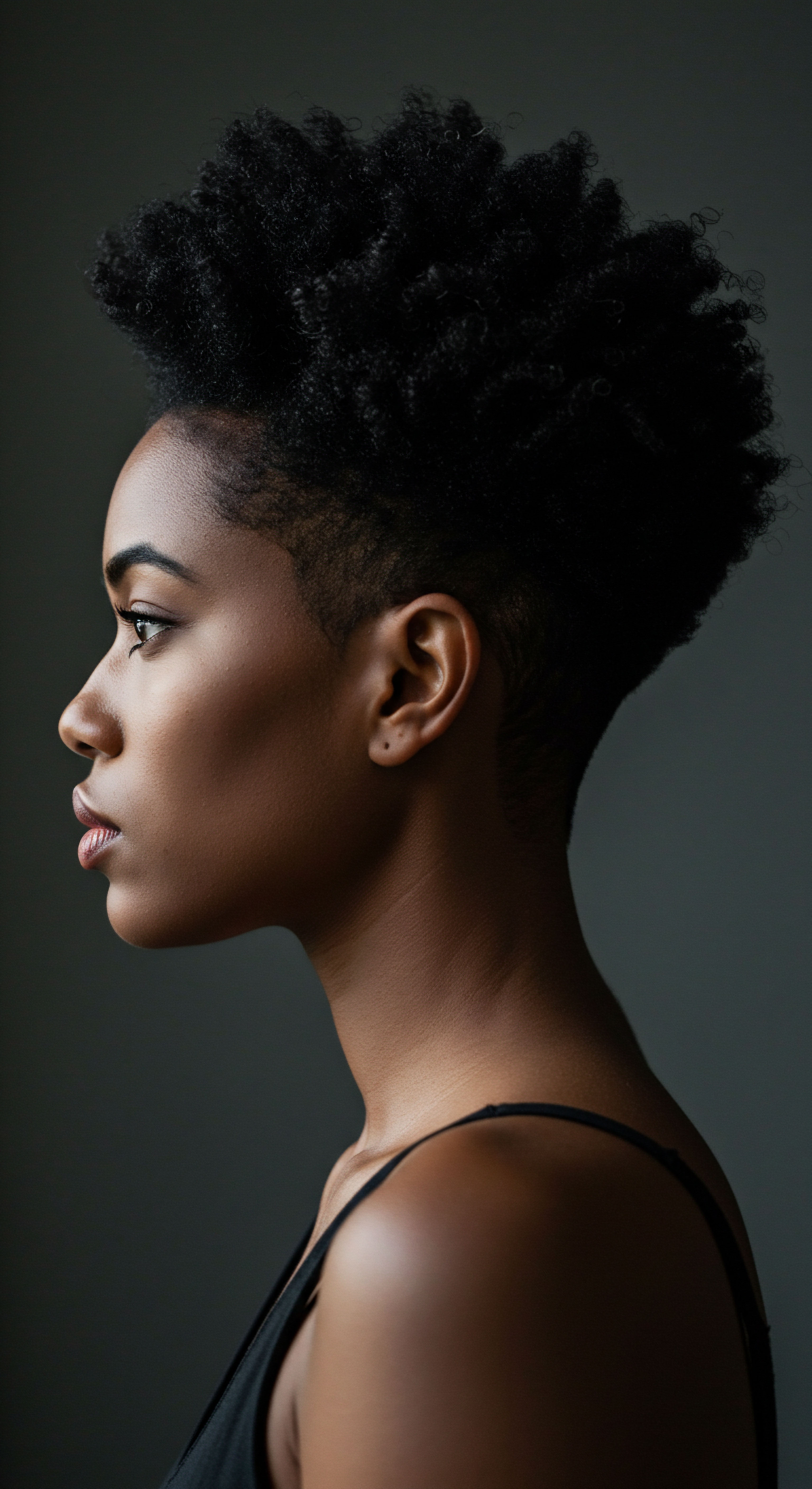
How Do Hair Classification Systems Aid Understanding?
Modern hair classification systems, such as the widely recognized Andre Walker typing system (though often debated and expanded upon), attempt to categorize hair based on its curl pattern, ranging from straight (Type 1) to coily/kinky (Type 4). While these systems offer a starting point for discussion and product selection, they are merely descriptive tools. Ancestral wisdom, in contrast, often approached hair care with a more intuitive and holistic recognition of individual hair characteristics, rather than strict categorizations.
Cultures understood the subtle differences in density, porosity, and elasticity, adapting their care rituals accordingly. For example, a hair type that might be labeled ‘4C’ today would have been recognized by its specific needs for moisture and gentle manipulation within a traditional community, leading to the application of particular plant oils or styling techniques.
The lexicon of textured hair has expanded significantly in recent years, borrowing from both scientific terminology and community-developed terms. Words like “porosity,” “elasticity,” “density,” and “strand thickness” are now common currency, helping individuals articulate their hair’s unique qualities. Ancestral knowledge, while not using these precise scientific terms, possessed an experiential understanding of these concepts.
The choice of a heavier oil for hair that felt “thirsty” (high porosity) or a lighter application for hair that felt “easily weighed down” (low density) demonstrates an intuitive grasp of these principles. This shared vocabulary, whether ancient or modern, serves the purpose of allowing for more precise care.
The cyclical nature of hair growth—anagen (growth), catagen (transition), telogen (resting), and exogen (shedding)—is a universal biological process. However, influencing factors like nutrition, stress, and physical manipulation can affect these cycles. Ancestral diets, rich in whole foods and natural sources of vitamins and minerals, likely supported healthy hair growth from within. Practices that minimized tension and chemical alteration would have contributed to longer anagen phases and reduced premature shedding.
| Hair Component Cuticle |
| Scientific Understanding Outer protective scales, often lifted in textured hair, leading to moisture loss. |
| Ancestral Recognition Need for protective layering, sealing, and gentle handling to retain internal moisture. |
| Hair Component Cortex |
| Scientific Understanding Main body of hair, determines strength and elasticity. |
| Ancestral Recognition Importance of internal nourishment through diet and external conditioning to maintain pliability. |
| Hair Component Follicle Shape |
| Scientific Understanding Curved, leading to coiled growth and uneven sebum distribution. |
| Ancestral Recognition Direct scalp application of oils and butters recognized as vital for lubrication. |
| Hair Component Hair Porosity |
| Scientific Understanding Hair's ability to absorb and hold moisture. |
| Ancestral Recognition Intuitive selection of product density; lighter liquids for low porosity, heavier for high. |

Ritual
To consider the daily or periodic practices that shape our hair’s vitality is to step into a space where tradition meets tangible effect. These rituals, passed from hand to hand, from elder to youth, are not merely rote actions. They are conscious decisions, deeply rooted in a desire for well-being and appearance.
We move from the foundational understanding of hair itself to the practical application of care, seeing how these age-old techniques, once learned through observation and oral transmission, find their validation in the contemporary understanding of hair science. It is a dialogue between intuition and empirical evidence, a quiet testament to enduring wisdom.
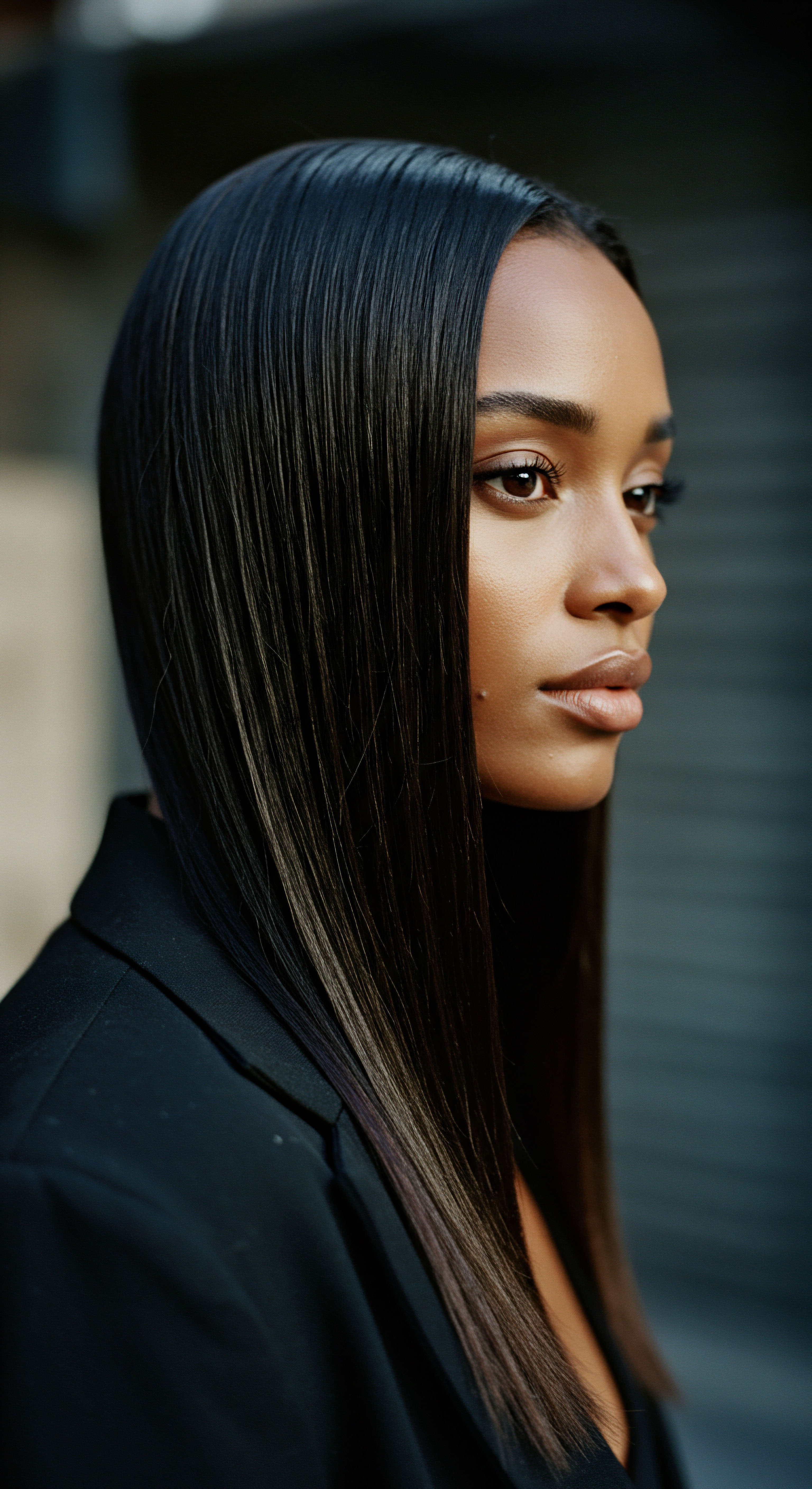
How Do Protective Styles Shield Strands?
Protective styles, such as braids, twists, and cornrows, have long been a cornerstone of textured hair care across diverse cultures. Their purpose extends beyond aesthetic appeal; they serve as a physical shield for delicate strands. By tucking away the hair ends and minimizing daily manipulation, these styles reduce exposure to environmental aggressors like sun, wind, and pollution. They also significantly lessen mechanical stress from combing, brushing, and styling, which are common culprits for breakage in hair that is already prone to fragility at its curves.
The concept of “low manipulation” is central to the efficacy of these styles. Each time hair is combed or styled, there is a degree of friction and potential for damage to the cuticle. Protective styles allow the hair to rest, promoting length retention by reducing the opportunity for breakage. This is particularly relevant for textured hair, where the natural curl pattern can lead to tangles and knots, making detangling a delicate process.
A study in the Journal of Cosmetic Science, conducted by Rele and Mohile in 2003, offered compelling evidence for the ancestral practice of pre-shampoo oiling. Their work found that Coconut Oil, when applied to hair before washing, significantly reduced protein loss for both undamaged and damaged hair. This finding supports the intuitive ancestral understanding that hair needs a barrier against the stripping action of cleansers, a practice that reduces the vulnerability of wet hair to damage. This research stands as a powerful counterpoint to earlier Western hair care narratives that often overlooked or even dismissed the value of pre-wash treatments.
Beyond long-term styles, traditional natural styling techniques, such as finger coiling, Bantu knots, and various forms of twisting, also contribute to hair health. These methods define the natural curl pattern without relying on heat or harsh chemicals, allowing the hair to maintain its inherent strength and moisture. They often incorporate natural emollients and humectants, drawing moisture from the environment and sealing it within the hair shaft.

What Role Do Tools and Techniques Play?
The selection of tools in ancestral practices was often dictated by what was available from nature, yet these choices frequently align with modern scientific understanding of gentle care. Wide-tooth combs carved from wood or bone, or even simply using fingers, minimized snagging and pulling, preserving the integrity of the hair shaft. This contrasts sharply with the damaging effects of fine-tooth combs or brushes on dry, coiled hair.
Heat styling, while prevalent in contemporary beauty, was far less common ancestrally, and when used, it was often with natural methods or limited tools. The inherent risks of thermal damage—denaturation of keratin, loss of moisture, and cuticle lifting—were thus largely avoided. The ancestral approach prioritized the hair’s natural state, focusing on enhancing its inherent qualities rather than forcing it into a different form.
The comprehensive toolkit of textured hair care, in its most authentic sense, comprises not only physical implements but also the knowledge of how to use them with care and respect. It includes the gentle hand, the patient detangling, and the mindful application of nourishing ingredients.
Protective styles and gentle, traditional techniques significantly lessen mechanical stress, allowing textured hair to retain length and integrity.
The chart below provides a brief glimpse into some common ancestral hair care tools and their modern counterparts, highlighting the underlying principle of gentle manipulation.
| Ancestral Tool/Method Fingers/Wide-Tooth Combs |
| Principle of Action Minimizes breakage and snags during detangling. |
| Modern Parallel/Understanding Importance of gentle detangling, wide-tooth combs, detangling brushes. |
| Ancestral Tool/Method Plant-Based Oils/Butters |
| Principle of Action Seals moisture, reduces friction, adds sheen. |
| Modern Parallel/Understanding Emollients, humectants, protein treatments; scientific validation of specific oil benefits. |
| Ancestral Tool/Method Natural Drying/Air Drying |
| Principle of Action Avoids heat damage, preserves hair's natural structure. |
| Modern Parallel/Understanding Low-heat styling, air-drying methods to maintain hair health. |
| Ancestral Tool/Method Braids/Twists |
| Principle of Action Protects ends, reduces manipulation, length retention. |
| Modern Parallel/Understanding Protective styling as a foundation for healthy hair growth. |
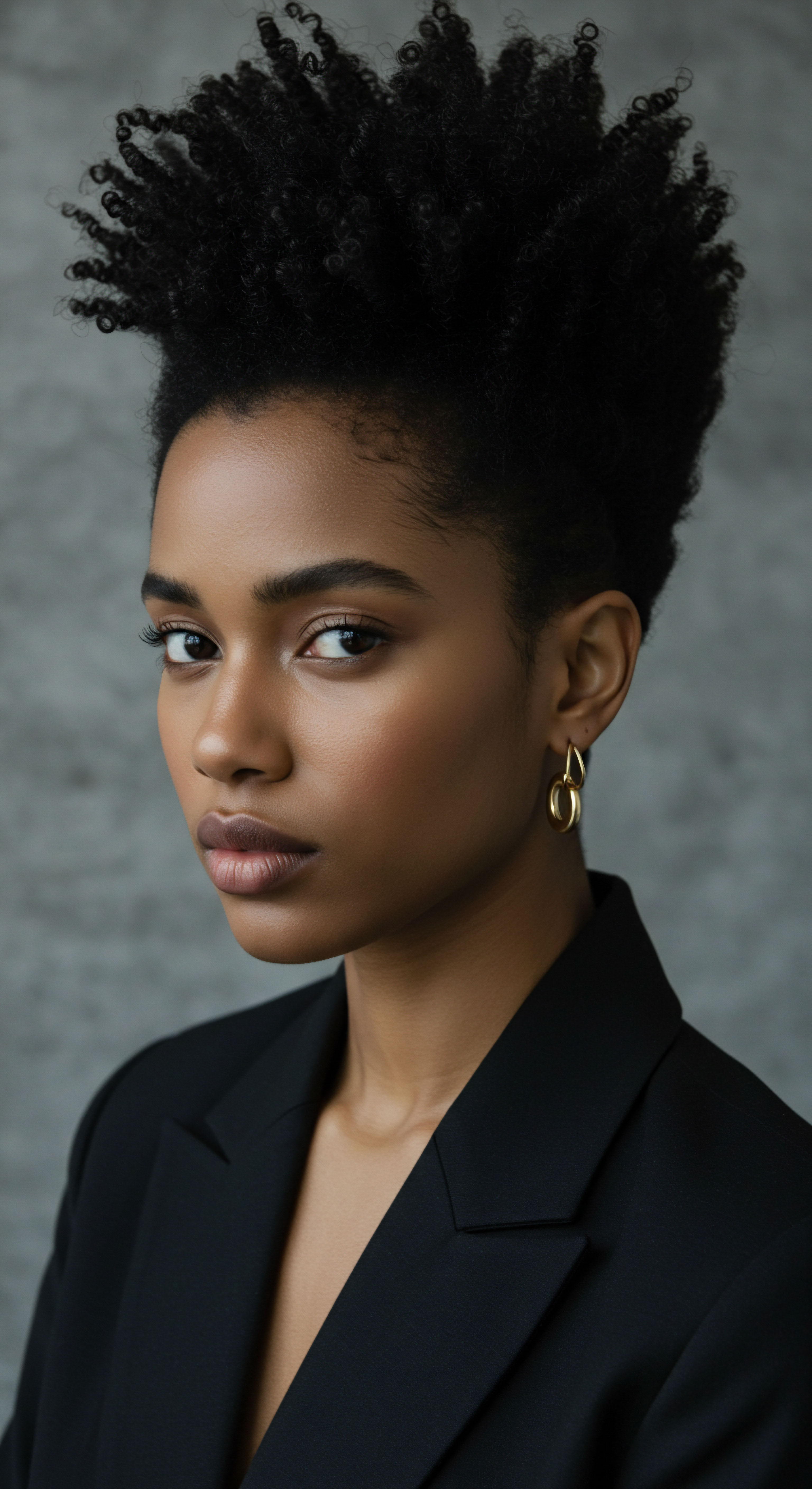
Relay
To move beyond the immediate practice and consider the enduring legacy of ancestral hair care is to engage with a deeper level of insight. This exploration reveals how science, culture, and individual experiences converge, offering a multi-dimensional view of what truly supports hair vitality. It invites us to consider the subtle yet powerful connections between our inner state and the outward expression of our strands, drawing upon research and scholarship to illuminate the wisdom of past generations. We step into a realm where the theoretical underpins the practical, where each choice in hair care carries a lineage of knowledge.
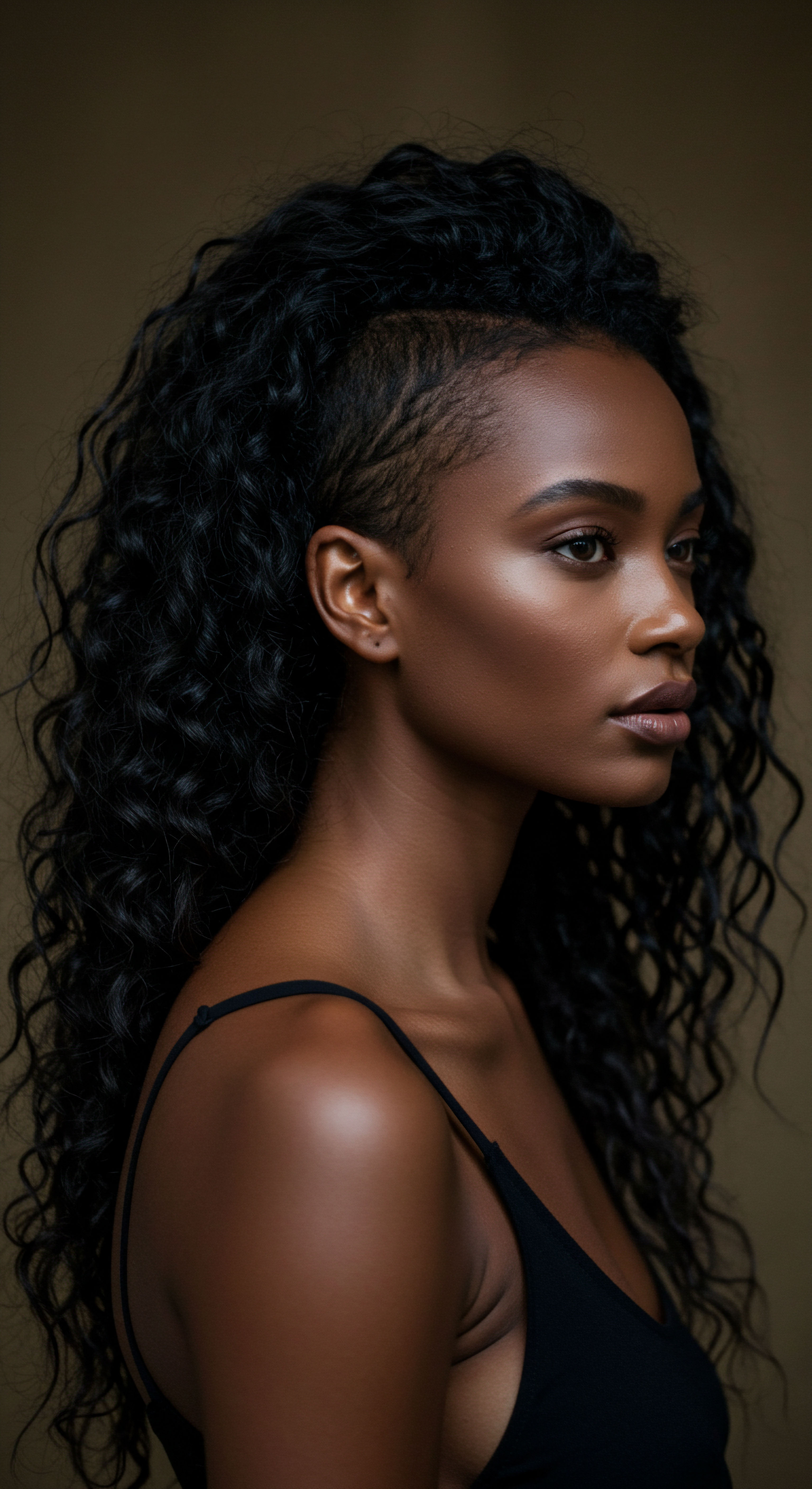
What is the Role of Personalized Regimens?
Ancestral hair care was inherently personalized. It was not a one-size-fits-all approach, but rather a system adapted to individual hair types, environmental conditions, and available resources. Families and communities passed down specific remedies and techniques, refined over generations, to suit the unique needs of their members. This bespoke approach aligns with contemporary dermatological advice that stresses the importance of tailoring hair care regimens to individual scalp conditions and hair characteristics.
For example, treatments for conditions like seborrheic dermatitis, while effective for some, may be too drying for individuals with textured hair, necessitating alternative approaches or careful application directly to the scalp to retain moisture. The choice of formulations also matters, with oil-based options often preferred for textured hair due to their moisture-retaining properties, contrasting with gel or foam preferences for other hair types.
The concept of a “nighttime sanctuary” for hair is a beautiful illustration of ancestral wisdom meeting modern practicality. Many traditional cultures understood the importance of protecting hair during sleep to prevent tangles, breakage, and moisture loss. The use of bonnets, head wraps, or silk scarves is a practice that dates back centuries in various African and Indigenous cultures.
This practice minimizes friction against abrasive pillowcases, which can cause cuticle damage and lead to frizz and breakage. From a scientific standpoint, cotton pillowcases absorb moisture from the hair, leading to dryness, while silk or satin materials allow hair to glide smoothly, preserving its hydration and structural integrity.
The choice of ingredients in ancestral hair care was often rooted in local flora and fauna, intuitively selecting elements with beneficial properties. Contemporary ingredient science now validates many of these choices.
- Botanical Cleansers ❉ Plants like soapnuts (Sapindus mukorossi) or shikakai (Acacia concinna) contain natural saponins, gentle surfactants that cleanse without stripping the hair’s natural oils. Modern research confirms that these compounds offer effective, mild cleansing, supporting a healthy scalp microbiome compared to harsh synthetic sulfates which can disrupt this delicate ecosystem.
- Hair Oiling ❉ As discussed, the ancient practice of applying oils like coconut oil to hair before washing has been scientifically shown to reduce protein loss. Beyond protection, oils like argan, jojoba, and castor, used in various traditions, provide essential fatty acids, antioxidants, and vitamins that nourish the scalp and hair shaft. A balanced scalp microbiome, which is crucial for hair health, is supported by practices that do not strip natural oils and instead provide beneficial nutrients.
- Herbal Infusions ❉ Ingredients such as amla, neem, and brahmi, central to Ayurvedic hair care, have been studied for their antimicrobial, anti-inflammatory, and hair-growth-promoting properties. These herbs were not merely decorative additions but were chosen for their perceived therapeutic effects, now often corroborated by phytochemical analysis.
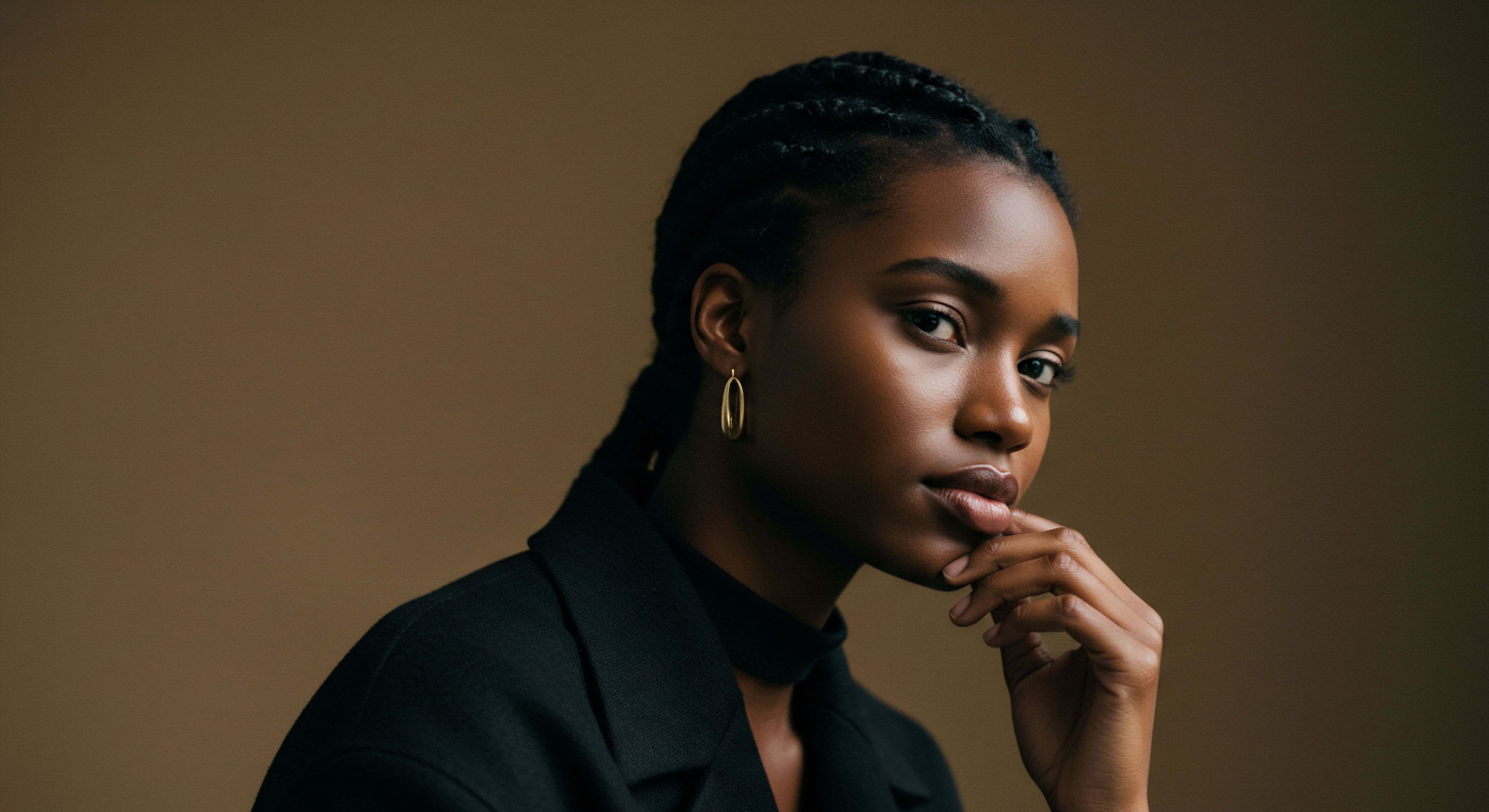
How Does Ancestral Wisdom Inform Problem Solving?
Ancestral methods often offered intuitive solutions to common hair concerns, solutions now gaining scientific backing. For example, concerns about dryness were addressed with frequent oiling and moisture-retaining styles. Scalp irritation or flakiness might be treated with herbal rinses possessing antiseptic or anti-inflammatory properties.
A particularly compelling intersection of ancestral wisdom and modern understanding lies in the realm of scalp microbiome health . Ancestral practices, often characterized by less frequent, gentler cleansing and the use of natural ingredients, may have inadvertently fostered a more balanced scalp environment. Modern science increasingly highlights the scalp microbiome—the community of bacteria and fungi living on the scalp—as a critical determinant of hair health.
An imbalanced microbiome can lead to issues like dandruff, irritation, and even hair loss. While commercial products often use harsh sulfates that strip the scalp’s natural defenses, creating an environment where harmful microbes can flourish, ancestral methods, by their very nature, were less disruptive.
Ancestral care, with its emphasis on personalized regimens and natural ingredients, often supported a balanced scalp microbiome, a concept increasingly validated by contemporary science.
A 2022 report published in the Journal of Investigative Dermatology found that individuals experiencing hair thinning displayed a significant imbalance in their scalp microbiota compared to those with healthy hair. This research underscores how a disrupted microbial diversity can trigger inflammation and follicular stress, potentially accelerating hair loss. The implication is clear ❉ ancestral practices that supported a healthy scalp ecosystem, even without explicit knowledge of microbes, were inherently beneficial.
Holistic influences on hair health were central to ancestral philosophies. The understanding that hair health is not isolated but connected to overall well-being—diet, stress levels, sleep, and even emotional state—was deeply ingrained. Ayurvedic medicine, for instance, links hair health to the balance of bodily energies and dietary choices. Similarly, many Indigenous traditions view hair as a barometer of spiritual and physical health.
Modern science now validates these connections, recognizing the impact of nutritional deficiencies, chronic stress (which can elevate cortisol levels and disrupt the scalp barrier), and poor sleep on hair growth cycles and scalp conditions. The wisdom of viewing hair as an extension of one’s entire being, therefore, stands as one of the most resonant ancestral contributions to contemporary understanding.
| Holistic Factor Nutrition |
| Ancestral Perspective Hair strength and vibrancy linked to diet of whole foods. |
| Contemporary Scientific Link Specific vitamins (Biotin, Vitamin D), minerals (Iron, Zinc), and proteins vital for hair growth. |
| Holistic Factor Stress Management |
| Ancestral Perspective Calm mind, balanced spirit considered essential for overall well-being. |
| Contemporary Scientific Link Stress hormones (cortisol) can disrupt hair growth cycle and scalp barrier. |
| Holistic Factor Sleep |
| Ancestral Perspective Rest and recuperation recognized for bodily restoration. |
| Contemporary Scientific Link Adequate sleep supports cellular regeneration and hormonal balance crucial for hair follicles. |
| Holistic Factor Environmental Protection |
| Ancestral Perspective Shielding hair from sun, wind, dust with coverings or styles. |
| Contemporary Scientific Link UV radiation, pollution, and physical friction cause oxidative stress and damage to hair structure. |

Reflection
The quiet persistence of ancestral methods, often dismissed as quaint or unscientific, holds a profound mirror to our modern understanding. It is a gentle reminder that the quest for hair health is not a recent invention, nor is it solely the domain of laboratories and product aisles. Instead, it is a timeless pursuit, deeply rooted in human connection to the natural world and to the wisdom passed through generations.
When we apply a plant-derived oil, or protect our strands for sleep, we are not simply performing a routine; we are participating in a continuum, a living testament to the enduring power of intuitive care. The harmony between ancient practice and contemporary science offers a pathway to not just healthier hair, but a more grounded approach to self-care, honoring the rich heritage that flows through our very strands.

References
- Rele, A. S. & Mohile, R. B. (2003). Effect of mineral oil, sunflower oil, and coconut oil on prevention of hair damage. Journal of Cosmetic Science, 54(2), 175-192.
- Misery, L. et al. (2016). The human scalp microbiome ❉ implications for dandruff and other conditions. Clinical, Cosmetic and Investigational Dermatology, 9, 231-236.
- Jo, S. J. et al. (2020). The Hair Follicle and Microbiome. Frontiers in Cellular and Infection Microbiology, 10, 574044.
- Elias, P. M. & Feingold, K. R. (2016). Skin barrier function ❉ a new story from ancestral wisdom. Journal of Dermatological Science, 83(2), 79-84.
- Madan, V. & Singh, R. (2018). Traditional Indian hair care practices and their scientific validation. Journal of Clinical and Aesthetic Dermatology, 11(10), 30-36.
- Gupta, A. & Gupta, A. (2020). Herbal remedies for hair care ❉ A scientific appraisal. Journal of Drug Delivery and Therapeutics, 10(4-S), 209-216.
- Sahu, G. K. et al. (2024). Plant-Based Powders in Dry Shampoo ❉ A Sustainable Solution for Hair Cleansing. Acta Scientific Pharmaceutical Sciences, 8(1), 13-20.
- Dias, M. F. R. G. (2015). Hair Cosmetics for the Hair Loss Patient. Clinics in Dermatology, 33(2), 221-229.
- Wallen-Russell, C. & Wallen-Russell, S. (2017). Meta analysis of skin microbiome ❉ new link between skin microbiota diversity and skin health with proposal to use this as a future mechanism to determine whether cosmetic products damage the skin. Cosmetics, 4(2), 14.
- Monteiro, A. M. et al. (2023). Penetration of Vegetable Oils into Textured Hair Fibers ❉ Integrating Molecular Matrix Assisted Laser Desorption Ionization Time-of-Flight Mass Spectroscopy (MALDI TOF/TOF MS) Analysis with Mechanical Measurements. Cosmetics, 11(6), 212.
- Singh, S. & Sharma, N. (2021). Assessment of Nutraceutical Potential of Herbs for Promoting Hair Growth ❉ Formulation Considerations of Herbal Hair Oil. The Open Dermatology Journal, 15(1).
- Dube, S. et al. (2022). Afro-Ethnic Hairstyling Trends, Risks, and Recommendations. Cosmetics, 9(1), 26.
- Aguh, C. & Maibach, H. (2023). Bridging gaps and cultivating care ❉ a call for culturally competent dermatological education for ethnic hair. Journal of the American Academy of Dermatology, 89(6), 1251-1252.
- Gao, Z. et al. (2008). Substantial alterations of the cutaneous bacterial biota in psoriatic lesions. PLoS One, 3(7), e2719.
- Tsai, W. H. et al. (2023). Heat-killed Lacticaseibacillus paracasei GMNL-653 ameliorates human scalp health by regulating scalp microbiome. BMC Microbiology, 23, 121.